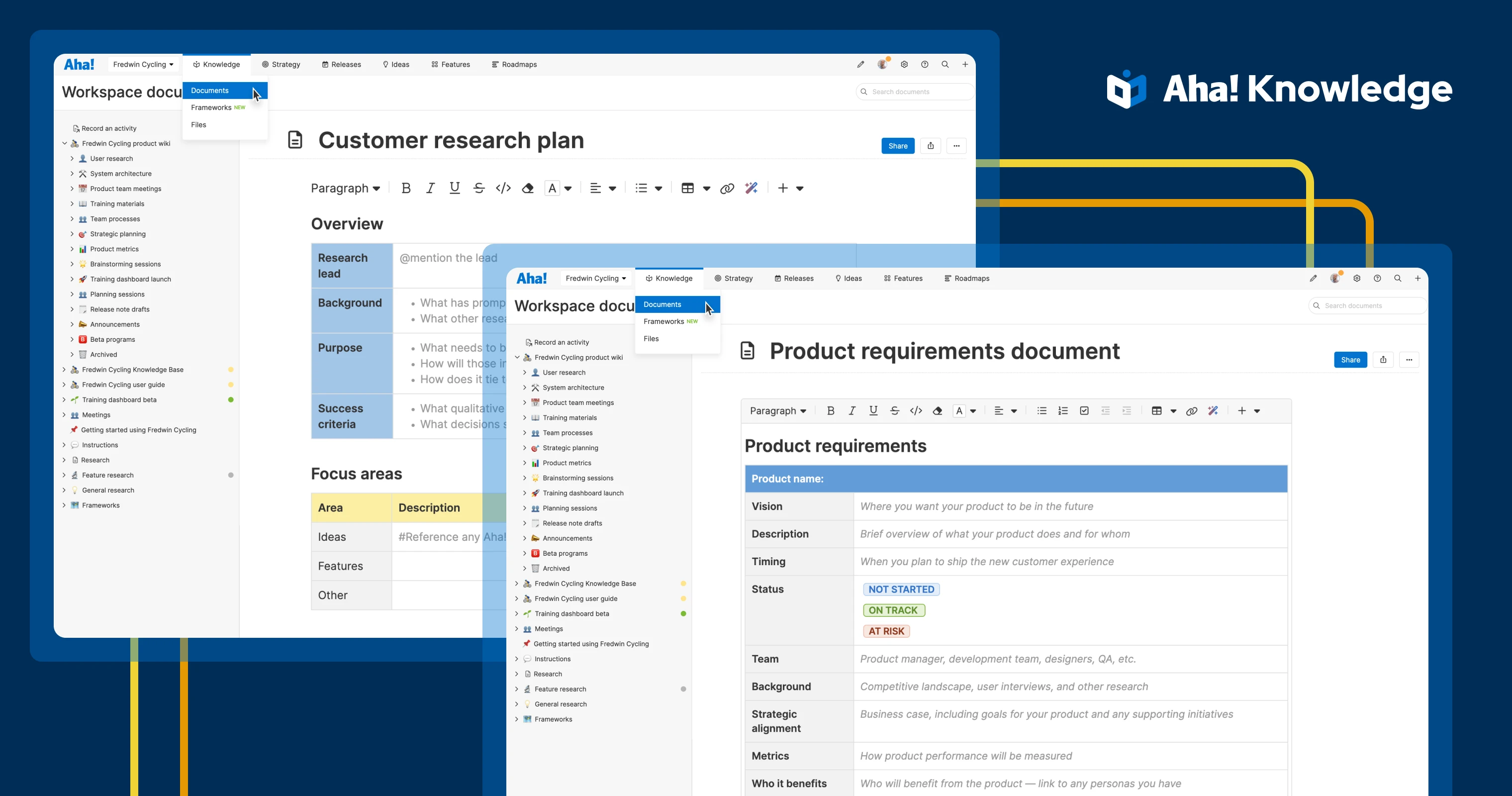
Knowledge sharing is key to product development success. | Photo by Jodi B Photography
Why is sales not selling the product?
"Sales overpromised what we will deliver."
"Sales reps do not have a deep enough understanding of the product."
"No one is happy with what is on our roadmap."
Complaints like these are all too common at organizations where there is a disconnect between product and sales. But pointing fingers will not solve anything. As product managers, it is our responsibility to make sure colleagues have the information they need to deeply understand, sell, and support the product. In turn, we have a lot to learn from customer-facing teams.
Building and delivering the best possible product hinges on how well teams come together to share what they learn.
Even though we have never had a sales group at Aha! many of us came from companies with traditional sales motions. And we continue to talk with customers every day who have salespeople at their own organizations. The most successful ones understand that product and sales teams need to be in lockstep.
This goes beyond revealing what is coming next on the roadmap or encouraging sales to share feedback from prospects. It is about translating product features into benefits and salient stories — so sales can engage in deeper conversations with prospects about real value. You want to make sure sales does not hear things secondhand or after the fact. Rather, those teammates should receive ongoing updates and insights to truly understand the product's direction. And having a strong feedback loop in place allows them to submit and follow up on ideas from prospective customers.
It is challenging to do this well and at scale. Product managers are natural helpers. We want to answer questions and be available to the team. But this puts us at risk of being a bottleneck. If we are fielding one-off questions all day long, how will we have time to get other work done?
With this in mind, we launched Aha! Knowledge a few months ago to offer organizations greater visibility and knowledge sharing capabilities. When you have a central place to store product documentation and team resources, you can share pertinent information and give other teams the ability to self-serve answers.
Let's look at five ways an internal knowledge base helps sales teammates become product champions.
The ideas here are oriented to sales teams. But you could just as easily apply them to other groups in the organization.
Quick access to product details
Sales needs to know what's coming now, next, and later — and, most importantly, why. Reserve a folder within your knowledge base for items such as:
Product positioning: Easy-to-skim details surrounding product overviews, key benefits, and differentiators
Product roadmap: A real-time view of upcoming features and releases with progress toward product goals
KPIs: Data on product performance, user engagement, and adoption rates
FAQs: Answers to common product-related questions from customers
Centralized customer insights
A knowledge base is an ideal place to record customer research and observations. New sales team members can use it to get to know your customers. And experienced teammates can take advantage of it to layer in new learnings. Document things such as:
Target buyer personas: Profiles of target customers, including pain points and motivations
Case studies: Real-world examples of how customers use the product
Customer feedback: Summarized feedback from customer polls and interviews
Consistent messaging guidance
Partner with the marketing team to equip sales teammates with the tools they need to have meaningful conversations with prospects. Think:
Messaging frameworks: Core messages aligned with product positioning
Sales talking points: Answers and thought-starters for common scenarios
Email templates: Standardized templates for outreach and follow-ups
Training on new features
Help the sales team confidently learn and use the product. A knowledge base might include the following:
Interactive how-tos: Step-by-step guides with visuals or videos
Meeting or tutorial recordings: Sessions that delve into new features and their benefits
Release notes: An ongoing digest of what is new, improved, or fixed
Streamlined feedback loops
Make it known how you want to collect feedback from prospects and customers. This knowledge base section could include:
Feedback submission processes: A summary of your idea management process (if you use Aha! Ideas, this process might be defined directly in your ideas portal)
Regular feedback reports: Summaries of feedback received and actions taken
Discussions: Spaces for sales and product teams to collaborate on issues and opportunities. (If you use Aha! Roadmaps, much of this discussion will take place directly within active work items on the roadmap or within the backlog.)
Knowledge begets confidence. When you give sales teams what they need to achieve, everyone feels invested in the product — and proud of your collective wins.
Giving sales access to information is a great start. Then, consider schedules for updating information as needed. You will probably want to set up meetings or planning sessions to talk live with sales. We have a great series on how to align with key stakeholders at every phase of product development. You can tailor the advice there for any team you meet with.
Sharing product knowledge has never been easier — try Aha! Knowledge for free.




